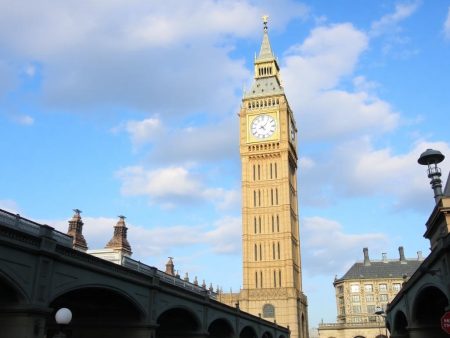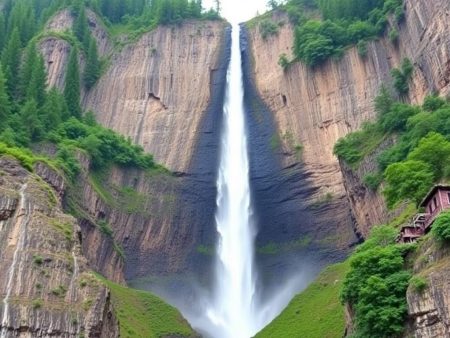Skyscrapers have always captured the imagination, standing as symbols of progress, innovation, and ambition. In the United States, some of the tallest buildings not only define city skylines but also tell stories of architectural brilliance and human determination. From bustling financial hubs to cultural landmarks, these towering structures represent more than just height—they’re statements of vi
Top 10 Tallest Buildings in the US: Iconic Skyscrapers Shaping Urban Skylines
Skyscrapers have always captured the imagination, standing as symbols of progress, innovation, and ambition. In the United States, some of the tallest buildings not only define city skylines but also tell stories of architectural brilliance and human determination. From bustling financial hubs to cultural landmarks, these towering structures represent more than just height—they’re statements of vision and creativity.
Convert the height of the tallest people, buildings, mountains and monuments to m, feet and inches to compare
0' 0" is equal to 0.0 cm or 0.00 m.
Whether it’s the shimmering glass façades or the breathtaking views from their pinnacles, these skyscrapers leave a lasting impression. Each one has its own unique charm and history, showcasing the evolution of design and engineering over the decades. For those who love architecture or simply marvel at feats of human achievement, exploring the tallest buildings in the US offers a glimpse into the heights we’ve reached—literally and figuratively.
The Evolution Of Skyscrapers In The US
Skyscrapers in the US trace their roots to the late 19th century, with Chicago and New York leading early advancements. The Home Insurance Building, completed in 1885 in Chicago, is often regarded as the first skyscraper, standing 138 feet tall with ten stories. Its steel-frame construction marked a turning point in architectural engineering.
During the early 20th century, cities experienced rapid vertical growth driven by urbanization and economic prosperity. Buildings like the Chrysler Building and Empire State Building in New York, completed in 1930 and 1931 respectively, showcased Art Deco designs combined with cutting-edge construction techniques. The Empire State Building held the title of the world’s tallest building for nearly 40 years, reaching 1,454 feet to its antenna tip.
Technological innovation allowed for taller and more sustainable structures in the mid to late 20th century. Boston’s John Hancock Tower, completed in 1976, demonstrated advancements in glass-panel construction, while the Willis Tower (Sears Tower) in Chicago, completed in 1973, reached 1,450 feet, dominating the skyline for decades.
Post-2000 developments saw further feats with modern materials and design philosophies. One World Trade Center in New York, completed in 2014, stands 1,776 feet tall, symbolizing resilience and integrating green building practices. Contemporary skyscrapers balance aesthetics, functionality, and sustainability, representing continued evolution in urban architecture.
Top Tallest Buildings In The US
The United States boasts several of the tallest buildings in the world, showcasing exceptional architecture and engineering. These skyscrapers dominate city skylines and highlight urban innovation.
One World Trade Center, New York
Standing at 1,776 feet, One World Trade Center is the tallest building in the US. Located in Lower Manhattan, it was completed in 2014 as part of the World Trade Center complex redevelopment. Designed by David Childs, it incorporates sustainability features, such as rainwater collection systems and high-efficiency glass. Known as the “Freedom Tower,” it symbolizes resilience and strength.
Central Park Tower, New York
Central Park Tower, rising 1,550 feet, is the tallest residential building globally. Completed in 2020, this Midtown Manhattan skyscraper includes luxury apartments, a private club, and retail spaces. Designed by Adrian Smith + Gordon Gill, its sleek façade and innovative engineering support record-breaking heights without compromising stability.
Willis Tower, Chicago
Formerly called the Sears Tower, Willis Tower reaches 1,451 feet and was the tallest building in the world from 1974 to 1998. Designed by architect Bruce Graham and structural engineer Fazlur Rahman Khan, it exemplifies tubular design for structural efficiency. Visitors often appreciate its Skydeck, which offers panoramic views and interactive glass ledges.
432 Park Avenue, New York
At 1,396 feet, 432 Park Avenue is a slender residential skyscraper in Manhattan. Completed in 2015, it features minimalist architecture by Rafael Viñoly and offers luxury apartments with floor-to-ceiling windows and high ceilings. Advanced vibration dampers enhance its stability despite its slim proportions.
Trump International Hotel and Tower, Chicago
This Chicago landmark reaches 1,388 feet, making it one of the city’s tallest structures. Completed in 2009, it combines residential spaces, a hotel, and dining venues. Designed by Adrian Smith, its reflective glass façade emphasizes the building’s elegance and complements Chicago’s cityscape.
Architectural Design And Features
Architectural design of tall buildings in the US blends innovation with aesthetic appeal. These structures incorporate advanced engineering techniques and sustainable practices to meet modern urban needs.
Innovations In Skyscraper Engineering
Skyscraper engineering incorporates materials and methods that enhance structural integrity and efficiency. Steel-frame construction, introduced with the Home Insurance Building, revolutionized vertical development by supporting greater heights. Modern advancements include high-strength concrete and lightweight aluminum, which enable slender designs while maintaining stability.
Load-distribution systems like the bundled tube, featured in Willis Tower, redistribute weight to withstand lateral forces such as wind. Diagonal bracing and tuned mass dampers further improve resilience against environmental stresses. By integrating these features, US skyscrapers achieve both durability and exceptional height.
Environmental Considerations In Modern High-rises
Environmental factors play a major role in contemporary skyscraper design. One World Trade Center incorporates energy-efficient systems, including rainwater harvesting and high-performance glazing, to minimize resource use. Natural ventilation and green roofs, found in structures like Bank of America Tower in New York, improve air quality and insulation.
Skyscrapers now prioritize certifications like LEED (Leadership in Energy and Environmental Design) by integrating renewable energy sources and sustainable construction materials. Innovations in eco-friendly designs not only reduce carbon footprints but also enhance urban living standards.
The Cultural And Economic Impact Of Tall Buildings
Tall buildings shape urban identities and serve as iconic landmarks that reflect a city’s character and ambition. Structures like the Empire State Building and Willis Tower are not only architectural marvels but also cultural symbols, attracting millions of visitors annually. These skyscrapers inspire local pride and global recognition, solidifying their cities’ positions as cultural and economic hubs.
Economically, skyscrapers contribute significantly by maximizing land use in densely populated areas. These buildings house offices, residential spaces, and retail centers, driving commerce and job creation. For example, One World Trade Center supports thousands of jobs and stimulates economic activity in New York City. Mixed-use designs, like those in Central Park Tower, exemplify the adaptability of tall buildings to meet urban demands efficiently.
The presence of tall buildings enhances tourism, boosting local economies through increased visitor spending. Architectural attractions such as observation decks, like those at Willis Tower and One Vanderbilt, generate revenue while offering unique experiences. These buildings also create indirect economic benefits by uplifting surrounding businesses.
In areas with sustainable skyscrapers, cities experience reduced energy costs and improved air quality. Green-certified buildings, like the Bank of America Tower in New York, lower operational expenses while fostering environmentally conscious urban development. Through cultural symbolism and economic contributions, tall buildings represent a dynamic force in shaping modern cities.
Conclusion
Skyscrapers in the US are more than just towering structures; they’re a testament to human ingenuity and ambition. Each one tells a story of progress, blending cutting-edge technology with artistic vision to redefine urban landscapes. These architectural marvels inspire awe while shaping the cities they call home.
As they continue to evolve, skyscrapers not only push the boundaries of height but also embrace sustainability and functionality. They stand as symbols of resilience, creativity, and the ever-forward momentum of modern society. Whether admired for their design or their role in urban life, these buildings leave a lasting impression on all who encounter them.
Frequently Asked Questions
What is the significance of skyscrapers in the US?
Skyscrapers symbolize progress, innovation, and ambition. They shape city skylines while embodying stories of architectural brilliance and human determination. These structures drive urban development, serve as iconic landmarks, and reflect the cultural and economic aspirations of their cities.
Which was the first skyscraper in the US?
The Home Insurance Building in Chicago, completed in 1885, is considered the first skyscraper. It marked a turning point in architectural engineering with its innovative steel-frame construction.
What is the tallest building in the United States?
One World Trade Center in New York City is the tallest building in the US, standing at 1,776 feet. It symbolizes resilience and incorporates modern sustainable design features.
How did skyscraper designs evolve over time?
Skyscraper designs have evolved from steel-frame construction in the late 19th century to modern sustainable designs with advanced materials like high-strength concrete and energy-efficient systems. They now balance height, aesthetics, functionality, and eco-friendliness.
What are some iconic skyscrapers in the US?
Notable skyscrapers include the Empire State Building, Willis Tower, Central Park Tower, 432 Park Avenue, and Trump International Hotel and Tower. Each represents remarkable architectural and engineering achievements.
How do skyscrapers contribute to urban economies?
Skyscrapers maximize space in crowded cities, housing offices, residences, and retail centers. They attract tourism, create jobs, and boost local commerce, contributing to economic growth and vibrant urban communities.
What innovations have enhanced skyscraper engineering?
Technological advancements like the bundled tube system, high-strength materials, and tuned mass dampers improve structural integrity and resilience against environmental stresses. These innovations ensure safety and efficiency in skyscraper design.
How are modern skyscrapers addressing sustainability?
Contemporary skyscrapers integrate green building practices, such as energy-efficient systems and eco-friendly materials. Buildings like One World Trade Center use features that reduce energy consumption and achieve sustainability certifications like LEED.
Why are skyscrapers important cultural landmarks?
Skyscrapers represent a city’s identity and ambition, often becoming globally recognized symbols. Buildings like the Empire State Building inspire local pride, attract millions of visitors, and reflect architectural excellence.
What is the role of skyscrapers in urban development?
Skyscrapers optimize land use in dense cities, enabling vertical growth. They support urban infrastructure by offering multifunctional spaces for living, working, and recreation, fostering sustainable urbanization and innovation.





